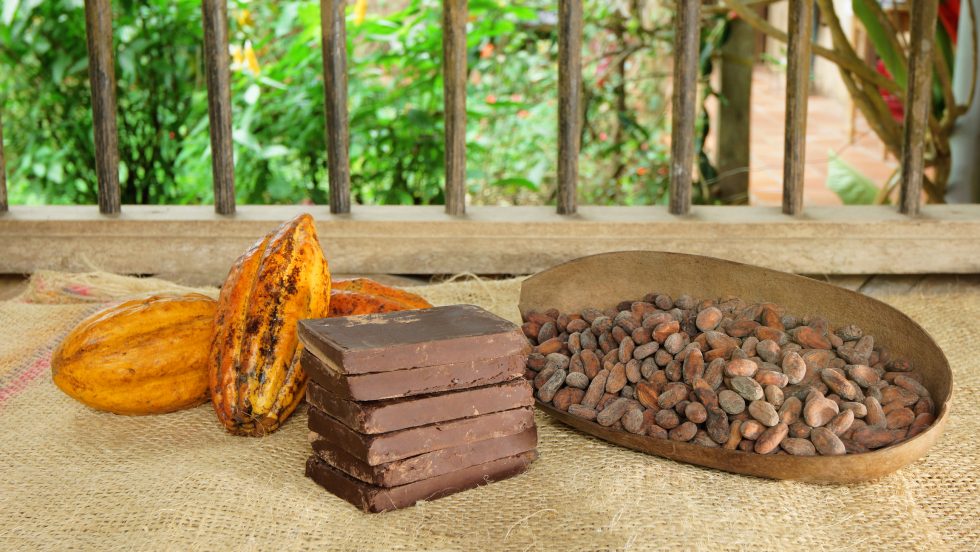By Esha Kode
Every year as part of a Valentine’s Day fundraiser, chocolate bars were distributed. I have always cherished the memory of my friends and I nibbling on the delicious chocolate bars. It wasn’t until recently that those Valentine’s Day memories were tarnished after I discovered that as we ate the sweet bites of chocolate at school, millions of children were missing out on their education, laboring in harsh conditions to provide our chocolate. It was astonishing to read that it wasn’t just my high school that bought a ton of chocolate during this week. Americans from all over the country buy nearly 58 million pounds of chocolate during the week of Valentine’s Day.
Chocolate is made from cocoa beans, and it is in the growing and harvesting of these beans that child labor is taking place. Nearly 70% of cocoa beans come from West Africa including Ghana, Ivory Coast, Nigeria, and Cameroon. Many children in these countries are born into cocoa farming families. As a result, starting from a young age, they are thrown into the vicious cycle of sacrificing their childhood and education to produce the chocolate that is exported to other countries, including the US. Those who aren’t born into cocoa families are not spared; some children become victims of child trafficking as they are kidnapped and taken to cocoa farms.
The chocolate industry is one the largest industries in the world, expected to reach $139.94 billion by 2024. With increases in cocoa production out of West Africa, the use of child labor grows with it.
WHY IS THIS IMPORTANT?
International Conventions, ratified by most countries, prohibits child labor and ensures the rights of children. The Convention on the Rights of the Child says that all countries must ensure that children are protected, given access to education and healthcare, given room to grow, and are informed and participate in achieving their own rights. International Labor Organization’s Convention 182, bans the worst forms of child labor. Child labor prevents children from gaining the education that they deserve as they spend more time working than being in school. Forcing children to perform labor instead of gaining knowledge is innately cruel and sacrifices their future.
In addition to not gaining an education, children on cocoa farms are forced to be in perilous situations. For example, many children “use chainsaws to clear the forests….[and others] climb the cocoa trees to cut bean pods using a machete.” Additionally, after using those tools, they are even forced to carry the cumbersome sacks of bean pods, weighing nearly 100 pounds, on their backs across the forests, risking permanent damage. Along with physical injuries, children involved in cocoa production are susceptible to pesticide poisoning. Supposedly, children learn how to “mix, load, and apply pesticides as young as age 12.” Constant exposure to these perilous pesticides can lead to respiratory paralysis and even death. Protective clothing is required when people come in contact with pesticides, however, children are almost never taught or given personal protective equipment to prevent harm.
It is evident that children working in cocoa production are subject to physical harm, if not death, but they are also more prone to mental illnesses. Children who began to work at the ages of 10-14 showed a higher risk of developing depression as compared to the children who started working at the ages of 15-17. This shows that the younger a child starts working, the greater their risk of developing mental health conditions in adulthood.
WHAT CAN WE DO?
One way to help eradicate child labor in cocoa production is to pressure our governments to intervene to protect children from working on cocoa farms. In the US, Section 307 of the Tariff Act of 1930 prohibits the importation of goods into the country produced using forced or indentured labor, including forced child labor. After allegations of possible child labor on the Ivory Coast cocoa farms in 2019, the US government is working with cocoa producing countries and companies to determine their course of action in addressing child labor in our chocolate.
Apart from working with governmental authorities, we have the power to directly pressurize the chocolate companies. Take action with Green America and call on the world’s ten biggest chocolate companies to put an end to child labor in cocoa and deforestation! When doing your own shopping, check your products against Green Americas chocolate scorecard or Slave Free Chocolates list. When we come together, our voices are amplified and we reach one step closer to protect every child from the dangers of working on cocoa farms.
For more information, read Assessing Progress in Reducing Child Labor in Cocoa Growing Areas of Côte d’Ivoire and Ghana by NORC at the University of Chicago.
Esha Kode is an 18 year old premed student at The College of New Jersey, studying psychology and hopes to become a pediatric surgeon. She is a pageant title-holder, TEDx organizer, and the cofounder of a 501(c)3 nonprofit organization. Esha is a 100 Million activist and she is excited to work with a team whose primary goal is to eradicate child poverty!

